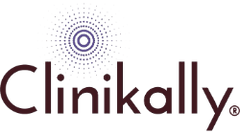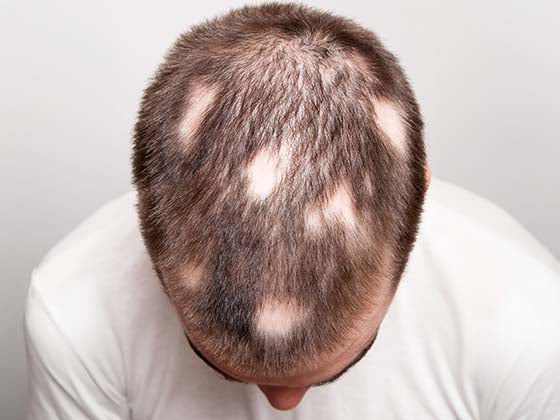When choosing between adenosine and minoxidil as a hair growth treatment, it's critical to understand how each works, their efficacy, and any potential adverse effects. This blog compares the two treatments, adenosine and minoxidil.
Understanding Hair Growth and the Role of Treatment

Hair growth and hair loss treatments are very individualized, so what works for one person may not work for another. If you are considering any therapy, you should speak with a dermatologist or hair specialist to determine the best method for your unique needs and hair condition. They can advise you on the best treatment option based on your hair type, the severity of your hair loss, and your overall health.
The Science Behind Hair Loss: Why It Happens

Hair loss is a complex condition with numerous potential causes, ranging from heredity and hormonal changes to autoimmune disorders, stress, and nutritional deficiencies. Understanding the underlying cause of hair loss is critical to determining the most effective treatment. If you are suffering considerable or abrupt hair loss, you should visit with a healthcare physician or dermatologist to determine the reason and the best treatment choices for your unique condition.
How Hair Growth Treatments Work: Key Mechanisms

The main mechanisms of hair growth treatments are:
-
Stimulating hair follicles: Many hair growth therapies aim to stimulate dormant or weaker hair follicles, which promotes hair growth. This is accomplished by boosting circulation, enhancing cellular activity, or supplying vital nutrients. Minoxidil is a vasodilator, which means it expands blood vessels. When used topically, it stimulates blood flow to the scalp, supplying more oxygen, nutrients, and hormones to the hair follicles. This rejuvenates dormant follicles and encourages them to enter the anagen (growth) phase. Platelet-rich plasma (PRP) therapy entails extracting the patient's blood, processing it to concentrate the platelets, and injecting the platelet-rich plasma into the scalp. The growth factors in plasma are thought to stimulate hair follicles and encourage renewal.
-
Blocking hair loss hormones: Some hair loss therapies address the hormonal reasons that cause hair thinning, specifically dihydrotestosterone (DHT), a testosterone-derived hormone. Finasteride (Propecia) acts by blocking 5-alpha reductase, an enzyme that turns testosterone into DHT. DHT is the hormone that causes hair follicles to shrink, resulting in thinning and hair loss, especially in cases of androgenic alopecia (pattern baldness). Dutasteride, like finasteride, inhibits the conversion of testosterone to DHT. However, it inhibits both types of the enzyme 5-alpha reductase, making it a potentially stronger choice.
-
Improving scalp health: Healthy hair growth requires a healthy scalp. Several treatments aim to improve the scalp's condition in order to produce the best possible environment for hair follicles. Ketoconazole Shampoo is an antifungal medication that can help with dandruff and seborrheic dermatitis. It also possesses anti-inflammatory and anti-androgenic qualities, which assist to minimize scalp irritation and inhibit DHT at the follicle level. Microneedling is a technique that uses tiny needles to induce controlled micro-injuries on the scalp. This stimulates collagen formation and boosts blood flow to the area, resulting in a healthier scalp and more hair growth.
-
Providing essential nutrients: A balanced diet and adequate nutrition are essential for good hair development. Certain therapies seek to deliver the vitamins, minerals, and proteins required for proper hair follicle function. Biotin (vitamin B7) is vital for healthy hair growth because it aids in the production of keratin, a key protein that forms the structure of hair. The vitamin B complex, which includes B12, folic acid, and niacin, also benefits hair health by increasing circulation and boosting the development of red blood cells, which transport oxygen to hair follicles. Iron and zinc are vital nutrients for healthy hair. Iron helps transport oxygen to hair follicles, while zinc aids in cell division and tissue growth. Deficiencies in these minerals can cause hair shedding and thinning.
-
Enhancing the hair growth cycle: Some treatments attempt to prolong the anagen (growth) phase of the hair growth cycle or increase the number of hair follicles that enter it. Low-level laser therapy (LLLT) uses red or near-infrared light to stimulate cellular activity in hair follicles. The light enters the scalp, improving blood flow, lowering inflammation, and encouraging the production of growth factors, all of which can help hair follicles stay anagen longer. Adenosine is a molecule that controls cell energy and signaling. Topical adenosine formulations stimulate hair follicles by increasing circulation and helping them enter the growth phase. It may also help reverse miniaturization in thinning hair follicles.
-
Hair transplantation: For those who have considerable hair loss or thinning, hair transplantation is a more permanent option. A hair transplant involves harvesting healthy hair follicles from areas of the scalp with dense hair (often the back or sides) and transplanting them to areas with thinning or no hair. These transplanted follicles continue to grow normally since they are resistant to DHT.
Factors That Influence Hair Regrowth Success

The most critical parameters influencing the success of hair regrowth procedures.
-
Cause of hair loss: The underlying cause of your hair loss influences how effective treatment will be. Hair loss can be caused by a variety of circumstances, and particular treatments are more effective for specific conditions such as androgenic alopecia (pattern baldness), telogen effluvium, alopecia areata, and vitamin deficiencies.
-
Timing of treatment: The sooner you begin treatment after experiencing hair thinning or loss, the greater your chances of success. Hair follicles are more likely to respond to therapy if they have not reached the telogen (resting) phase or become too small to mend.
-
Genetics and age: Your genetics and age are two of the most critical factors influencing hair growth. If you have a family history of hair loss, you are more likely to experience it yourself. Your reaction to treatments like Minoxidil or Finasteride may vary depending on your genetic composition. Younger people respond better to hair growth treatments since their hair follicles are often healthier. As we become older, our hair follicles deteriorate and the hair growth cycle slows. Age-related thinning is frequently more difficult to treat, but it is still controllable with the right medication.
-
Consistency and treatment duration: Achieving observable results with hair regeneration therapies requires consistent use. Most therapies take several months of consistent use before any apparent changes appear. Hair regrowth therapies, particularly Minoxidil and Finasteride, typically take 3-6 months to produce apparent results. Stopping treatment prematurely can interrupt progress and result in the loss of new growth.
-
Kind of treatment used: The effectiveness of a treatment is largely determined by its nature and how it addresses the underlying cause of hair loss. Minoxidil, finasteride, PRP (Platelet-Rich Plasma) therapy, and hair transplants are examples of therapies that are better suited to specific situations than others.
-
Scalp health and environment: Proper scalp health is vital for generating an environment conductive to hair growth. A healthy, well-nourished scalp promotes stronger, faster-growing hair.
-
Nutritional status: Nutrition is vital to hair health, and shortages in essential vitamins and minerals can cause thinning or excessive shedding.
-
Individual reaction to treatment: Everyone reacts differently to hair loss therapies, and genetics influence how effectively a person's hair follicles respond. Some people may have tremendous regrowth, while others may only observe minor changes or none at all.
-
Lifestyle factors: Stress management, exercise, and sleep quality can all have an impact on your hair's health. Chronic stress, a lack of sleep, and poor general health can all contribute to hair loss and delayed regrowth.
Adenosine vs. Minoxidil: How Do They Compare?

Adenosine and Minoxidil are two popular hair loss remedies, however they act in different ways and have varying degrees of success depending on the person. While both attempt to stimulate hair growth, understanding the distinctions might help you pick which therapy is best for you.
-
Minoxidil is an FDA-approved medication for androgenic alopecia that has been shown successful. It’s best for individuals experiencing moderate to severe hair loss, and while it has a few potential side effects, it is widely available and affordable. If you're seeking for a tried-and-true treatment, Minoxidil could be the greatest choice.
-
Adenosine is a promising but unexplored option. It appears to have fewer negative effects and may be useful for the early stages of hair thinning. However, it is not as widely available or tested as Minoxidil, and it may be less beneficial for patients suffering from advanced hair loss. If you prefer a gentler medication with fewer side effects, adenosine may be worth trying, especially if you are experiencing early hair thinning.
Mechanism of Action: How Each Ingredient Works

Both Adenosine and Minoxidil are used to treat hair loss, however they work through different biochemical pathways to encourage hair growth. Each of these substances functions at the cellular and molecular levels.
1. Minoxidil
Minoxidil is a well-known topical treatment primarily used for androgenic alopecia (pattern baldness) and other forms of hair loss. Though its exact mechanism isn’t fully understood, several theories explain how Minoxidil promotes hair regrowth.
-
Minoxidil acts as a vasodilator, which means it helps widen blood vessels. When applied to the scalp, it enhances blood circulation to hair follicles, allowing more oxygen, nutrients, and growth factors to reach them. This increased blood flow contributes to a more conducive environment for hair follicles to thrive and reach the anagen (growth) stage of the hair cycle. Minoxidil reverses hair follicle shrinking by boosting the delivery of critical nutrients, particularly in patients suffering from androgenic alopecia. This technique can result in stronger, thicker hair regeneration.
-
Minoxidil increases hair follicle proliferation, which encourages hair follicles to produce thicker, stronger hair. It is thought to extend the anagen phase (active growth phase) of the hair cycle, resulting in longer and fuller hair. Hair continues to develop as follicles remain in the growth phase for a longer period, aiding in the treatment of telogen effluvium and androgenic alopecia.
-
Minoxidil opens potassium channels in the cell membranes of hair follicles. This action is thought to help improve the function of the follicles and promote the growth of new hair. By facilitating the movement of potassium ions, Minoxidil may activate signaling pathways that support follicle growth. This mechanism further enhances follicular activity, encouraging hair regrowth and the thickening of existing hair.
2. Adenosine
Adenosine, a naturally occurring nucleoside, is vital for cellular energy metabolism and signaling. In terms of hair growth, adenosine is thought to have numerous processes that encourage hair regeneration.
-
Adenosine, like Minoxidil, may enhance blood flow to the scalp. This increased blood flow enables for more efficient transport of oxygen, nutrients, and growth factors to hair follicles, which is critical for hair regeneration and follicle stimulation. Increased circulation may assist to minimize hair follicle shrinkage, which is a hallmark of androgenic alopecia, by ensuring that the follicles receive the nutrients they require to operate properly.
-
Adenosine has been found to enhance follicular proliferation, which means it promotes the creation of new hair follicles and activates dormant or weak follicles. This stimulation is thought to direct follicles into the anagen (growth) phase. Adenosine stimulates follicle proliferation and promotes healthier hair follicles, which promotes new hair growth and thickness.
-
One distinguishing feature of adenosine is its ability to produce anti-androgenic effects. Dihydrotestosterone (DHT), a testosterone metabolite, causes follicular shrinkage in those with androgenic alopecia. Adenosine may inhibit the effects of DHT on hair follicles, hence preventing future hair loss and promoting regrowth.
-
Adenosine binds to adenosine receptors on the cell surface. This binding can activate signaling pathways that control cell proliferation, differentiation, and angiogenesis (the development of new blood vessels). Adenosine's receptor activation may improve follicular health, boost hair development, and promote hair follicle regeneration.
Clinical Evidence: What Studies Say About Their Effectiveness

Clinical trials have been conducted on both adenosine and minoxidil to determine their efficacy in encouraging hair regeneration. While minoxidil offers more substantial evidence due to its lengthy history of usage and FDA approval, it has shown promise in certain recent research, albeit with little clinical data.
Side Effects and Safety Considerations

When deciding between adenosine and minoxidil for hair growth, it is critical to evaluate the potential side effects and safety concerns with each medication. While both are generally regarded as safe, there are significant distinctions in the types of negative effects they may induce. The side effects and safety concerns for each treatment include.
-
Minoxidil
-
Minoxidil is extensively used and FDA-approved for hair loss, although it can cause negative effects, particularly in the early stages of treatment. Understanding this will allow you to make an informed selection.
-
Common side effects include scalp irritation, undesirable facial hair, early shedding (telogen effluvium), vertigo or lightheadedness, chest pain, and heart palpitations.
-
Serious but uncommon side effects include allergic reactions and hair loss in other areas (overgrowth).
2. Adenosine
-
Adenosine is less often used as a single treatment for hair loss than Minoxidil, however, it is included in a variety of topical hair care formulations. Adenosine, as a naturally occurring chemical in the body, has fewer adverse effects than minoxidil; however there are some things to consider.
-
Common side effects include scalp inflammation and increased hair shedding.
-
Serious but uncommon adverse effects include allergic reactions and combinations with other drugs.
Choosing the Right Treatment for Your Hair Growth Needs

The following guidelines will help you choose the best treatment for your hair growth needs:
-
Understanding the kind and stage of your hair loss: The appropriate treatment will differ depending on the type and stage of hair loss you are experiencing. Adenosine and minoxidil are typically used to treat androgenic alopecia (male and female pattern baldness), although their efficacy varies depending on how far your hair loss has advanced.
-
Skin sensitivity and irritation: If you have sensitive skin or a history of scalp irritation, adenosine may be a better option for you. It is more mild on the scalp and less likely to produce dry scalp, irritation, or redness.
-
Long-term commitment and consistency: To see effects, both adenosine and minoxidil must be used consistently and over time. However, if you want a medication that takes less daily commitment or has fewer long-term negative effects, adenosine may be a better option.
-
Effectiveness and speed of results: Minoxidil has been carefully investigated and has shown faster and more apparent outcomes than Adenosine, especially for severe hair loss. Minoxidil normally produces significant results after 2-4 months of treatment, with most people continuing to observe benefits for up to a year. If you want immediate results, minoxidil is perhaps the preferable option.
-
Side effects and safety concerns: Both minoxidil and adenosine cause side effects; however, the degree and frequency of these effects vary. Side effects of minoxidil include scalp irritation, undesired facial hair growth, early shedding, dizziness, chest pain, and (rarely) heart palpitations. Minoxidil is beneficial for the majority of people; however, it can cause problems for those with sensitive skin or those who suffer from substantial cardiovascular complications. Adenosine side effects include moderate scalp irritation, transient shedding, very rare allergic responses (swelling, redness), and possible interactions with specific medications.
-
Price and accessibility: Adenosine and minoxidil are both available over the counter, although the cost and availability may vary based on where you reside and the specific formulations available. Minoxidil is widely available in a variety of forms (solutions, foams, shampoos), and it is typically less expensive than specialized adenosine-based therapies. Adenosine-based products may be less prevalent or available in premium formulations, such as high-end hair care products, resulting in a higher cost.
Who Should Use Adenosine? Best Candidates

Individuals who benefit from adenosine-based hair treatments include:
-
Are in the early stages of hair loss and want to address thinning before it progresses.
-
Have sensitive skin or have been irritated by other products such as minoxidil.
-
Prefer a gentler, more natural treatment that has fewer side effects.
-
Are looking for a low-maintenance, gradual solution that they can easily incorporate into their daily routine.
-
Want to try a combination treatment in addition to other hair loss treatments.
-
Are looking for a gentler treatment for mild to moderate hair thinning.
If you want an effective treatment without the danger of severe side effects, adenosine may be the perfect solution for you. As with any hair growth medication, speaking with a healthcare physician or dermatologist can help you determine whether Adenosine is the best option for your specific hair loss needs.
When Is Minoxidil the Better Choice?

The scenarios in which Minoxidil may be a better choice for treating hair loss are:
-
Moderate to severe hair loss: Minoxidil is most useful for people with moderate to severe hair loss. It is one of the few FDA-approved medicines that has been clinically demonstrated to regenerate hair and restore thinning regions in the early stages of hair loss.
-
Need for faster outcomes: One of Minoxidil's main benefits is that it usually delivers apparent results sooner than other treatments. Most people see improvements after 2-4 months of constant use, with peak results typically happening after a year.
-
Moderate to severe male/female pattern baldness: The FDA has approved minoxidil, particularly for the treatment of androgenic alopecia. It is beneficial in both men and women, though concentrations vary from 5%. Men typically take minoxidil solution or foam, particularly for crown thinning and receding hairlines. The 2% minoxidil solution is frequently advised for women, while the 5% solution may be prescribed in select circumstances.
-
Proven and well-researched treatment: Minoxidil is a tried-and-true medication for hair loss that has been proven beneficial in numerous clinical trials. It is FDA-approved for both men and women and has a lengthy track record of safety and efficacy when used as prescribed.
-
Users seeking a topical solution: Minoxidil is a topical treatment, which means it is applied directly to the scalp, making it an excellent choice for those who prefer not to use oral medications such as finasteride or who want a non-invasive alternative.
-
Consistent use: For best results, minoxidil should be applied daily (typically twice a day). Individuals who are willing to commit to frequent use can get long-term benefits in terms of hair maintenance or regrowth.
-
Individuals with thick, coarse hair: Minoxidil works better on thicker hair. It improves hair density and thickness, with thicker hair providing better covering and fuller results. It is also effective for those who have scalp hair thinning rather than full baldness.
-
Not responding to other treatments: Minoxidil may be a viable alternative for people who have tried various over-the-counter or natural hair growth treatments without results. Its efficacy has been well established for those who require a more active approach to combat hair loss.
-
The goal is to prevent more hair loss: Minoxidil is not only effective at stimulating hair growth, but it also slows or stops subsequent hair loss. This can be especially useful for patients who are experiencing continuous hair thinning but do not wish to undergo more intrusive procedures such as hair transplants.
-
Solution for receding hairlines: Minoxidil has been demonstrated to be helpful for promoting hair growth on receding hairlines, particularly in men. While it is most usually connected with crown thinning, it can also be used to treat temporal recession and other locations where the hairline recedes.
Combining Treatments: Is It Safe and Effective?
Combining hair growth therapy can be both safe and effective when done correctly and under the supervision of a healthcare practitioner. Combinations like Minoxidil and Adenosine, Minoxidil and Finasteride, or Minoxidil and PRP can increase results, especially for people with moderate to severe hair loss. However, it is vital to investigate potential side effects, establish therapy compatibility, and contact with a healthcare professional to determine the best combination for your hair growth needs.
Personalized Hair Growth Strategies
A personalized hair development method considers your unique situation, including the cause and stage of your hair loss, as well as your preferences and sensitivities. Whether you begin with topical treatments, progress to oral medications, or pursue more sophisticated procedures, the best method will be tailored to your specific needs and lifestyle. You can develop a complete plan that works best for you by determining the root cause of your hair loss, selecting relevant therapies, and applying healthy lifestyle changes. Remember that patience, effort, and regular assessments are key for achieving the greatest results.
Lifestyle and Dietary Factors for Stronger Hair

The most significant lifestyle and dietary factors for stronger hair are:
-
Nutrition: A well-balanced diet is crucial for good hair health. Hair follicles require certain vitamins, minerals, and proteins to grow properly. Here are the crucial nutrients to incorporate into your diet for stronger, thicker hair such as protein, iron, biotin (Vitamin B7), vitamin D, zinc, vitamin E, omega-3 fatty acids, and vitamin A,
-
Healthy lifestyle habits: Adopting a healthy lifestyle promotes good hair health. Here are some habits that help promote stronger, healthier hair such as quit smoking, limit heat styling, protect your hair, and scalp massages.
When to Consult a Dermatologist for Hair Loss
Hair loss is a complex condition, and the sooner you consult a dermatologist, the higher your chances of finding an effective remedy. A dermatologist can perform a complete examination, diagnose the underlying problem, and propose the best course of action if you are experiencing abrupt hair loss, scalp irritation, or simply want guidance on how to maintain healthy hair. Consulting a dermatologist guarantees that you get an accurate diagnosis and treatments that are suited to your specific hair concerns.
Making the Best Choice for Your Hair Health

Choosing the optimal approach for your hair health can be overwhelming, especially given the variety of products, treatments, and lifestyle suggestions available. Whether you're dealing with hair thinning, excessive shedding, or simply want to improve the health and strength of your hair, the best options will be based on your specific needs, hair type, and any underlying disorders. To make an informed decision to keep your hair healthy and vibrant, assess your hair and scalp health, understand the causes of your hair problems, select the best treatment based on your needs, consider lifestyle changes for long-term hair health, be consistent, and seek professional assistance. You will be well on your way to healthier, more vibrant hair if you are patient and consistent and ask for help when needed.
















